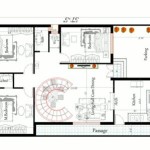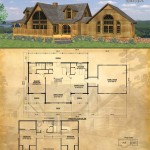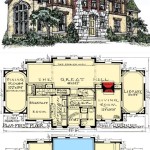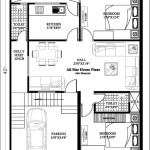Cool House Plans: Designing Your Dream Home
The process of building a home is a significant undertaking, often representing a culmination of years of planning and saving. A critical step in this process is selecting the right house plan. Cool House Plans.com offers a vast library of designs, catering to various architectural styles, lot sizes, and lifestyle preferences. Understanding the offerings of such platforms and navigating the selection process effectively is paramount to realizing a successful home construction project.
Cool House Plans.com functions as a marketplace connecting prospective homeowners with architects and designers. The platform hosts a collection of pre-designed plans that can be purchased and then utilized as the basis for construction. The availability of pre-designed plans offers several advantages, particularly in terms of cost and time efficiency. Rather than commissioning a completely custom design, which can be a lengthy and expensive endeavor, homeowners can select a plan that closely matches their needs and then potentially modify it to achieve a personalized result.
The plans available on the platform encompass a broad range of architectural styles, including traditional designs like Craftsman, Farmhouse, and Colonial, as well as contemporary styles such as Modern, Ranch, and Mediterranean. This diversity ensures that prospective homeowners can find a plan that aligns with their aesthetic preferences and the architectural context of their chosen building site. Furthermore, the plans are often categorized by features, such as number of bedrooms and bathrooms, square footage, and garage size, allowing for efficient searching and filtering.
Beyond the visual appeal, the structural integrity and practicality of a house plan are crucial considerations. Cool House Plans.com typically provides detailed information about the structural engineering behind each design, including foundation types, framing methods, and material specifications. This information is vital for ensuring that the plan meets local building codes and can be constructed safely and efficiently.
Understanding Plan Packages and Their Components
When selecting a house plan from Cool House Plans.com (or similar platforms), it is imperative to understand the components of the plan package being offered. A typical plan package will include a set of documents that detail every aspect of the construction process. These documents are essential for obtaining building permits, communicating with contractors, and ensuring that the home is built according to the intended design.
The core of the plan package is the set of architectural drawings, which typically include floor plans, elevations, sections, and details. Floor plans illustrate the layout of each level of the home, showing the arrangement of rooms, hallways, and other spaces. Elevations depict the exterior appearance of the home from different viewpoints, providing a visual representation of the facade. Sections are cutaway views that reveal the internal structure of the home, including wall construction, roof design, and floor levels. Details provide magnified views of specific elements, such as window and door details, stair construction, and trim work.
In addition to the architectural drawings, the plan package may also include structural engineering drawings, which detail the design of the foundation, framing, and other structural components. These drawings are typically prepared by a licensed structural engineer and are essential for ensuring the structural integrity of the home. Mechanical, electrical, and plumbing (MEP) drawings may also be included, showing the layout of the HVAC system, electrical wiring, and plumbing lines. These drawings are crucial for ensuring that the home is equipped with the necessary utilities and that these systems are installed safely and efficiently.
Furthermore, some plan packages may include a materials list, which specifies the types and quantities of materials required for construction. This list can be helpful for estimating the cost of the project and for ordering materials from suppliers. It is also important to note that most plan packages will include a copyright release, granting the purchaser the right to build the home according to the plan. However, the copyright typically remains with the designer or architect, preventing the purchaser from reselling or distributing the plan without permission.
The level of detail provided in the plan package can vary depending on the complexity of the design and the specific offerings of the designer or architect. It is essential to carefully review the plan package before making a purchase to ensure that it includes all the necessary information for construction. If any information is missing or unclear, it is advisable to contact the designer or architect for clarification. Understanding the components of the plan package is a crucial step in the house plan selection process.
Modifying a Pre-Designed House Plan
While pre-designed house plans offer convenience and cost savings, homeowners often desire modifications to personalize the design and better suit their specific needs and preferences. Cool House Plans.com, and similar platforms, typically facilitates the modification process, either directly through the original designer or by connecting homeowners with qualified architects and designers who can perform the alterations.
Common modifications include changes to the floor plan, such as relocating walls, adding or removing rooms, and altering the size and shape of spaces. Exterior modifications might involve changing the roofline, adding or removing windows and doors, and altering the facade materials. Structural modifications may be necessary to accommodate changes to the floor plan or exterior design, and may require the involvement of a structural engineer.
Before undertaking any modifications, it is essential to consult with a qualified architect or designer to assess the feasibility and cost of the changes. The architect or designer can review the existing plan, discuss the homeowner's desired modifications, and develop a revised plan that meets the homeowner's needs while adhering to building codes and structural requirements. It is also crucial to obtain any necessary permits before beginning construction, as modifications may require additional approvals from local building authorities.
The cost of modifying a house plan can vary depending on the extent of the changes and the complexity of the design. Minor modifications, such as moving a wall or adding a window, may be relatively inexpensive. However, more extensive modifications, such as changing the roofline or adding a room, can be significantly more costly. It is important to obtain a detailed estimate from the architect or designer before proceeding with the modifications to ensure that the project remains within budget.
It is also important to consider the impact of modifications on the overall design of the home. Changes to one area of the home can often have ripple effects throughout the entire structure, so it is essential to carefully consider the implications of each modification. For example, adding a room may require changes to the foundation, framing, and roof, as well as to the mechanical, electrical, and plumbing systems. A skilled architect or designer can help to anticipate these issues and develop a comprehensive plan that addresses all aspects of the project.
Navigating Legal and Regulatory Considerations
Building a home involves navigating a complex web of legal and regulatory requirements. These requirements are designed to ensure the safety, structural integrity, and environmental responsibility of the building. Before purchasing a house plan and commencing construction, it is crucial to understand the applicable building codes, zoning regulations, and other legal requirements.
Building codes are a set of regulations that govern the design and construction of buildings. These codes are typically adopted and enforced by local governments and are designed to ensure that buildings are structurally sound, fire-resistant, and energy-efficient. Building codes vary from jurisdiction to jurisdiction, so it is important to determine the applicable codes for the building site before beginning construction. The International Building Code (IBC) is a widely used model code that serves as the basis for many local building codes.
Zoning regulations govern the use of land within a municipality. These regulations specify the types of buildings that are permitted in different zones, as well as the minimum lot size, setbacks, and other requirements. Zoning regulations can also affect the design of a home, by specifying height limits, parking requirements, and other restrictions. It is essential to review the zoning regulations for the building site to ensure that the desired house plan complies with all applicable requirements.
In addition to building codes and zoning regulations, there may be other legal requirements that apply to the construction of a home. These may include environmental regulations, such as restrictions on tree removal or stormwater runoff, as well as historical preservation requirements, which may apply to homes located in designated historic districts. It is important to research all applicable legal requirements before beginning construction to avoid costly delays and penalties.
Obtaining building permits is a crucial step in the construction process. Building permits are required for most types of construction, including new construction, additions, and renovations. The permit application process typically involves submitting a set of plans and specifications to the local building department for review. The building department will review the plans to ensure that they comply with all applicable building codes and zoning regulations. If the plans are approved, a building permit will be issued, allowing construction to begin.
It is important to note that it is the responsibility of the homeowner to ensure that the construction complies with all applicable legal requirements. This may involve hiring a qualified architect, engineer, and contractor to oversee the project and to ensure that all work is performed in accordance with the building codes and zoning regulations. Failure to comply with these requirements can result in fines, delays, and even the demolition of the building.

Cool House Plans With S Houseplans Blog Com
The Most Beautiful House Plans Right Now Houseplans Blog Com

Cool House Plans With S Houseplans Blog Com

Modern And Cool House Designs With Open Floor Plans Blog Eplans Com
The Most Beautiful House Plans Right Now Houseplans Blog Com

House Plan 51981 Farmhouse Style With 2373 Sq Ft 4 Bed 2 Bath
The Most Beautiful House Plans Right Now Houseplans Blog Com

Three Bedroom Cool House Concept Home Design Plan Floor Plans

Modern And Cool House Designs With Open Floor Plans Blog Eplans Com

The Cool House Plans Company Searching Made Simple








